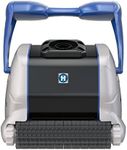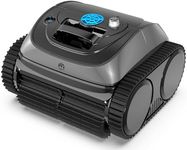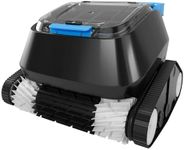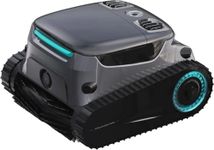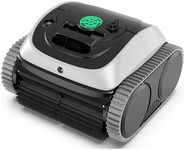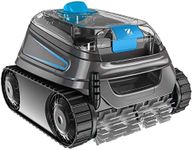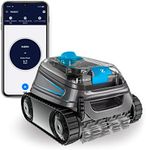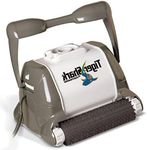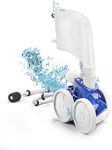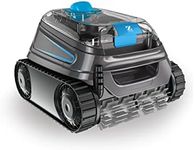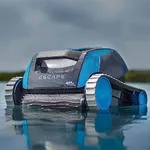Buying Guide for the Best Robotic Pool Cleaners
Robotic pool cleaners are a fantastic investment for maintaining a clean and inviting swimming pool with minimal effort. These devices autonomously navigate your pool, scrubbing surfaces and vacuuming debris, which saves you time and energy. When choosing a robotic pool cleaner, it's important to consider various specifications that will determine how well the cleaner will meet your specific needs. Understanding these key features will help you select a model that is efficient, effective, and suitable for your pool type and size.Cleaning CoverageCleaning coverage refers to the areas of the pool that the robotic cleaner can effectively clean. This includes the pool floor, walls, and sometimes the waterline. It's important because a cleaner that can only handle the floor might not be sufficient if your pool walls also accumulate dirt and algae. Cleaners are generally categorized into those that clean just the floor, those that clean the floor and walls, and those that can handle the floor, walls, and waterline. If your pool tends to get dirty all over, opt for a model with comprehensive coverage.
Pool Size CompatibilityPool size compatibility indicates the maximum pool size that the robotic cleaner can handle effectively. This is crucial because a cleaner designed for smaller pools may not have the power or cord length to clean a larger pool thoroughly. Cleaners are often rated for small, medium, or large pools. To choose the right one, measure your pool and ensure the cleaner's specifications match or exceed your pool's dimensions to ensure complete coverage.
Filter Type and CapacityThe filter type and capacity determine how well the cleaner can capture debris and how often you'll need to empty it. Filters can range from fine to ultra-fine, affecting the size of particles they can trap. Capacity is important for how much debris the cleaner can hold before needing to be emptied. If your pool is surrounded by trees or gets a lot of debris, a larger capacity and finer filter might be necessary. Choose based on the typical debris load in your pool.
Cleaning Cycle TimeCleaning cycle time refers to how long the robotic cleaner takes to complete a cleaning session. This is important for energy efficiency and convenience. Some models offer multiple cycle options, such as quick clean or deep clean. If you frequently use your pool and need it cleaned quickly, a model with a shorter cycle time might be preferable. For thorough cleaning, especially if the pool is not used daily, a longer cycle might be more effective.
Navigation and Mapping TechnologyNavigation and mapping technology determines how the robotic cleaner moves around the pool and avoids obstacles. Advanced models use smart mapping to ensure complete coverage without missing spots or getting stuck. This is important for efficiency and thoroughness. Basic models may follow a random pattern, while advanced ones use systematic navigation. If your pool has a complex shape or many obstacles, a model with advanced navigation technology will likely perform better.
Energy EfficiencyEnergy efficiency refers to how much power the robotic cleaner uses during operation. This is important for keeping operating costs low and being environmentally friendly. Energy-efficient models use less electricity, which can be a significant saving over time. Look for models with energy-saving features or certifications if you are concerned about electricity usage. Consider how often you plan to use the cleaner and balance energy efficiency with cleaning performance.


